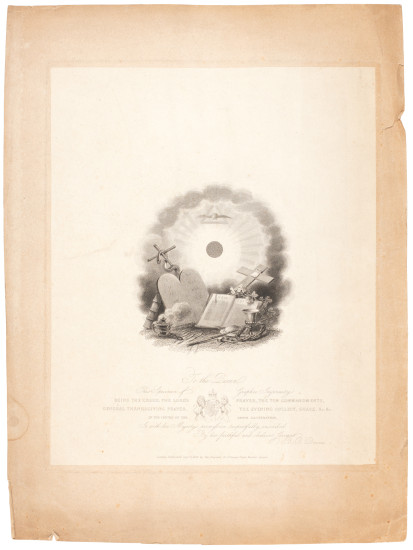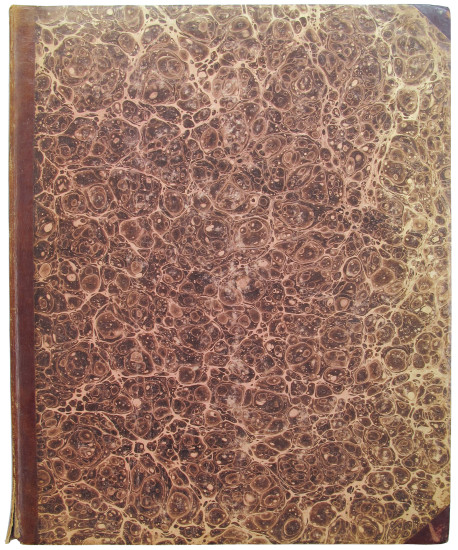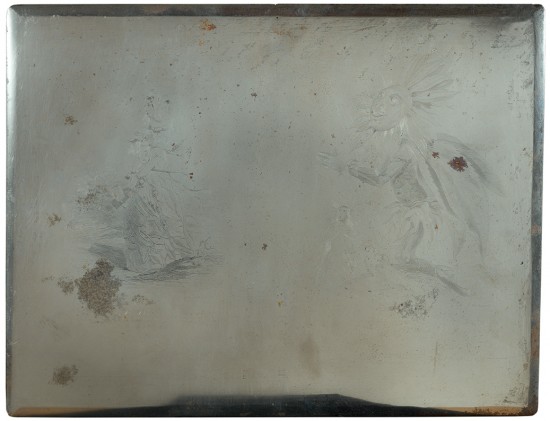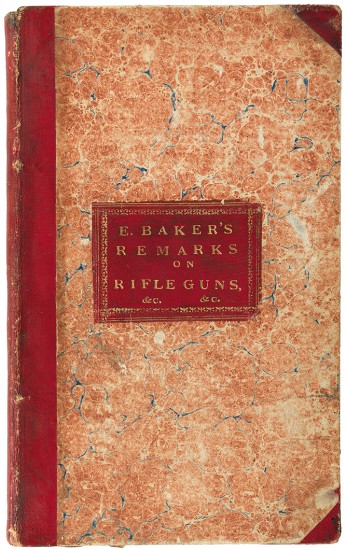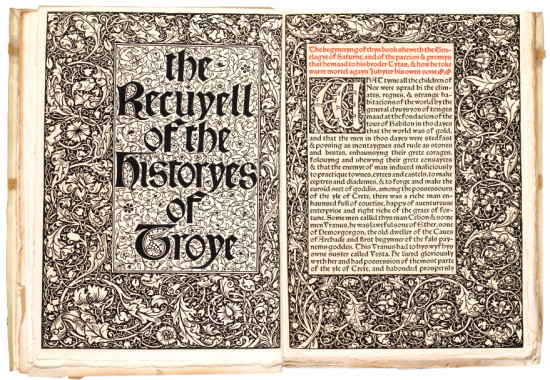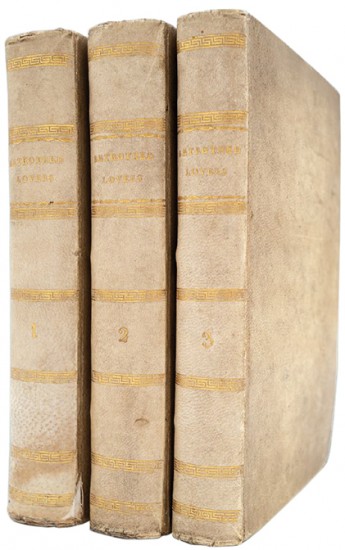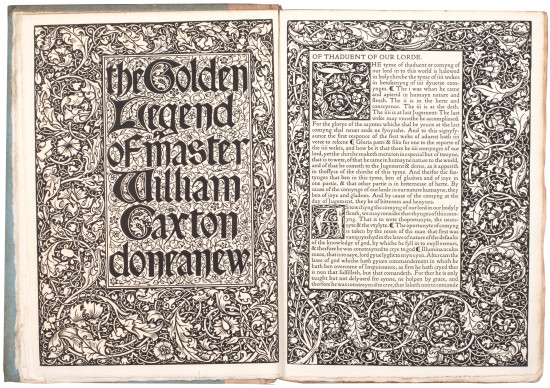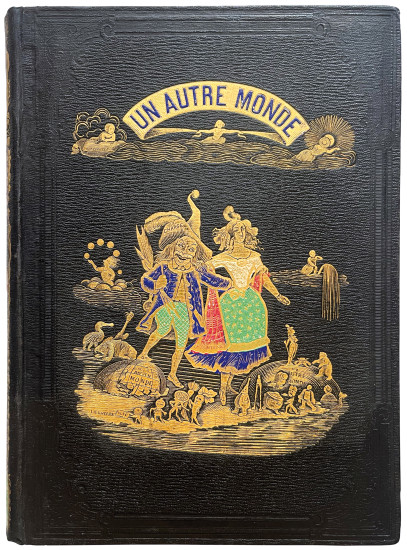Suggestions for the Architectural Improvement of the Western Part of London
Smirke, Sydney
London. Priestley & Weale. 1834
The scarce first edition of Sydney Smirke's ambitious proposals for improvements in the West End.
The aquatint plates give an idea of the grandeur of Smirke's ideas and imagination, the first, by William Daniell after Smirke, is titled 'The Proposed Situation in the Green Park for New Parliamentary Buildings'; the second and possibly even more ambitious, by J. E. Coombs after Smirle, is titled 'Proposed Situation on the North Bank of the Serpentine for a National Edifice to Receive the Monuments of Illustrious Men'.
'Sidney Smirke, whose whole career was overshadowed by that of his brother, Robert, here puts forward his own views on the creation of an impressive government image which was to include an entire nucleus of palaces and offices in Green Park, a Westminster embankment and a Gothic temple on the Serpentine to hold the tombs defacing the interior of Westminster Abbey ... Smirke's plan included slum clearance with proposed dormitories and recreation centres, widening of streets especially in Soho, and more direct routes through the West End. It is clarified by a colour map. His proposed major entrance from Trafalgar Square into the Mall is the only suggestion that actually materialised later.' (Weinreb).
The inserted cuttings, those of the previous owner, the architect Patrick McNeil, include his extensive notes regarding the history of London's sewerage written on the verso of the announcement of a RIBA meeting. That meeting, held in December 1959, of the RIBA Library Group, included a talk 'The records of the Commissioners of Sewers as sources for the history of building development in London during the sixteenth to nineteenth centuries' by Miss Ida Darlington, M.A., F.S.A., F.L.A., Librarian and Archivist to the London County Council. Other inclusions are cuttings from booksellers' catalogues including the announcement, from Batsford in 1958, of a copy of the present work offered for '21s' and bound in 'h[al]f. calf.' that is likely this very example.
Although well represented in institutions: COPAC details a number of copies including those at the BL, National Library of Scotland, Cambridge, the Courtauld and the V & A while OCLC lists a number in the US (Princeton, Columbia, Harvard, Yale and others), the book is scarce on the market with only a handful of copies at auction in the last 50 years. RBH also lists a copy (from the collection of Richard Grant White Esq.) sold by Bangs & Co. in New York in 1885 although it does not record the price.
[Weinreb 24:86].
The aquatint plates give an idea of the grandeur of Smirke's ideas and imagination, the first, by William Daniell after Smirke, is titled 'The Proposed Situation in the Green Park for New Parliamentary Buildings'; the second and possibly even more ambitious, by J. E. Coombs after Smirle, is titled 'Proposed Situation on the North Bank of the Serpentine for a National Edifice to Receive the Monuments of Illustrious Men'.
'Sidney Smirke, whose whole career was overshadowed by that of his brother, Robert, here puts forward his own views on the creation of an impressive government image which was to include an entire nucleus of palaces and offices in Green Park, a Westminster embankment and a Gothic temple on the Serpentine to hold the tombs defacing the interior of Westminster Abbey ... Smirke's plan included slum clearance with proposed dormitories and recreation centres, widening of streets especially in Soho, and more direct routes through the West End. It is clarified by a colour map. His proposed major entrance from Trafalgar Square into the Mall is the only suggestion that actually materialised later.' (Weinreb).
The inserted cuttings, those of the previous owner, the architect Patrick McNeil, include his extensive notes regarding the history of London's sewerage written on the verso of the announcement of a RIBA meeting. That meeting, held in December 1959, of the RIBA Library Group, included a talk 'The records of the Commissioners of Sewers as sources for the history of building development in London during the sixteenth to nineteenth centuries' by Miss Ida Darlington, M.A., F.S.A., F.L.A., Librarian and Archivist to the London County Council. Other inclusions are cuttings from booksellers' catalogues including the announcement, from Batsford in 1958, of a copy of the present work offered for '21s' and bound in 'h[al]f. calf.' that is likely this very example.
Although well represented in institutions: COPAC details a number of copies including those at the BL, National Library of Scotland, Cambridge, the Courtauld and the V & A while OCLC lists a number in the US (Princeton, Columbia, Harvard, Yale and others), the book is scarce on the market with only a handful of copies at auction in the last 50 years. RBH also lists a copy (from the collection of Richard Grant White Esq.) sold by Bangs & Co. in New York in 1885 although it does not record the price.
[Weinreb 24:86].
pp. (i), (ii), 117, (i). Tall 8vo. (254 x 162 mm). Half-title, title with printer's credit verso, large folding leaf (unfolded: 486 x 322 mm) with engraved plan of 'the Proposed Improvements' with additional colouring by hand and the text of Smirke's 'Suggestions' illustrated with two aquatint plates, final leaf with printer's credit verso. Contemporary green half-calf over marbled boards, smooth spine with gilt title, marbled endpapers, t.e.g.
#48341


